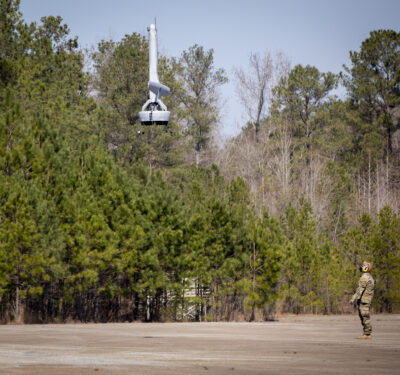Airobotics recently became the first company with authorization to fly an unamend aircraft system (UAS) without a pilot.
The certification was presented by the Civil Aviation Authority of Israel (CAAI), according to a news release, giving Airobotics the ability to replace an authorized human drone pilot with an authorized computer.
Over the last 24 months, Airobotics has gone through a rigorous field testing and product verification process to prove to CAAI that the system could operate safely on its own. The system accumulated more than 10,000 flight hours and automated flight cycles. The company produced dozens of technical manuals, engineering books, reports and analysis.
The certification process began with an Alpha version in March 2015, according to the release, then progressed to a Beta version on August 2015 before the company developed the MVP (Minimum Viable Product) last year. The process demonstrated the system’s abilities, which were corrected along the way based on CAAI’s and Airobotics’ customers’ demands. Those abilities include adhering to safety standards, security procedures, emergency response, system reliability, and the capability to comply with flight and mission demands. Examples of tests include environmental conditions, endurance and robustness testing.
Airobotics’ drone system has operated in automated BVLOS mode without a certified UAS pilot at two customer sites: Israel Chemicals (ICL) and Intel in Israel. Based on the experience Airobotics has gained in Israel, the company is scaling its operations to additional markets, starting with Australia and the U.S.
“Airobotics has completed a long cycle, which started in 2013,” said Ran Krauss, CEO & Co-Founder of Airobotics, according to the release. “This newly granted certification is our next generation milestone that completely takes the human drone pilot out of the equation in BVLOS operations. We predict this certification milestone will revolutionize the global market landscape, and pave the way for future applications of automated drones.”
The Airobotics’ automatic platform is comprised of three parts: “Optimus,” a large, high-capacity drone capable of flying 30-minute missions while carrying a one-kilogram mission specific payload; an “Airbase,” a completely automated base station from which the Optimus drone launches and lands on its own; and “Software,” an integrated, dynamic software that enables users to control and manage missions.






